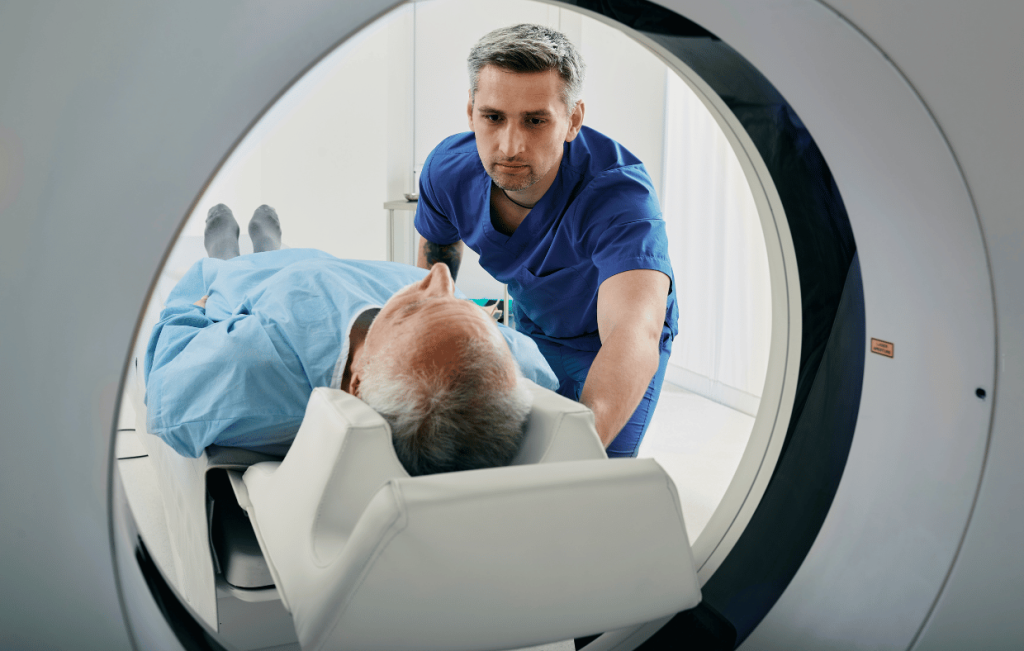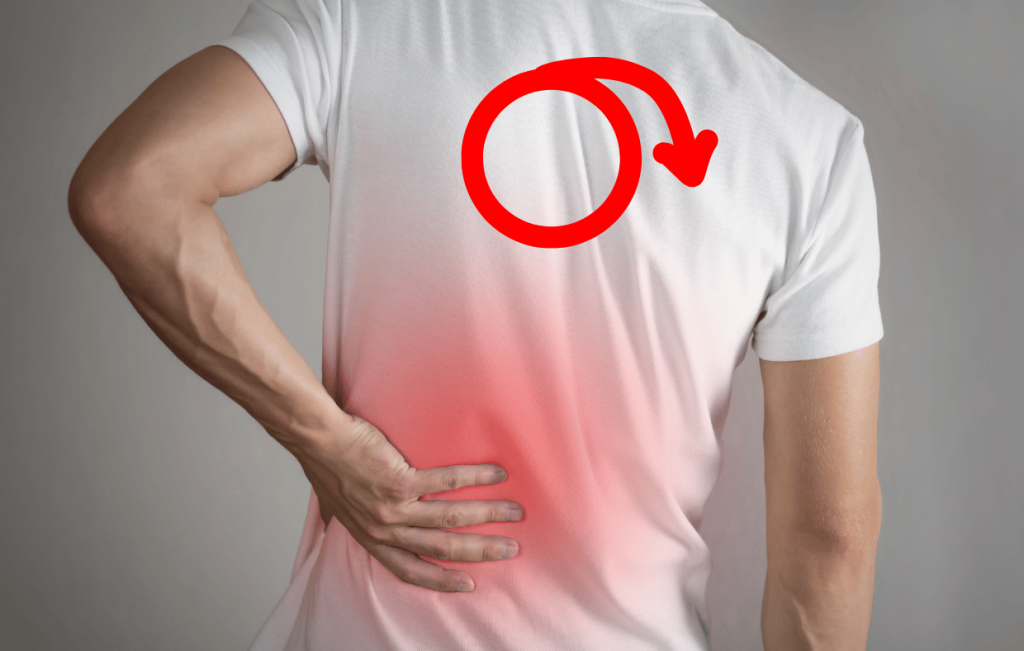Sciatica affects millions worldwide, typically causing severe pain from the lower back through the legs. While most associate sciatica with back and leg pain, few realize its impact on overall health, particularly sexual function. One lesser-known but distressing side effect is erectile dysfunction (ED). If you’re experiencing sciatica and sexual issues, they may be connected.
What Is Sciatica?

Sciatica refers to irritation or compression of the sciatic nerve, the body’s largest nerve, running from the lower spine through the legs. Various conditions can cause it, including herniated discs, spinal stenosis, degenerative disc disease, or piriformis syndrome. When compressed or irritated, this nerve causes radiating pain, muscle weakness, and numbness in affected areas.
Understanding Erectile Dysfunction
Erectile dysfunction (ED) is the inability to achieve or maintain an erection firm enough for sexual intercourse. While commonly associated with cardiovascular issues, hypertension, diabetes, and hormonal disorders, ED is increasingly linked to nerve disorders affecting the lumbar spine and pelvic floor muscles.
The Sciatica-ED Connection
The connection between sciatica and ED lies in the nerve roots affected by sciatica and their proximity to nerves crucial for sexual function. The pudendal nerve, originating in the lower spine, plays a central role in sexual function, including arousal and ejaculation. Sciatica can impact this area directly or indirectly through inflammation or pressure, potentially resulting in pudendal neuralgia, a condition linked to chronic pelvic pain and sexual dysfunction.
In severe cases, particularly those involving cauda equina syndrome—a medical emergency—patients may experience fecal and urinary incontinence and complete loss of erectile function due to spinal cord or severe nerve damage.
Symptoms and Risk Factors
Symptoms of sciatica-induced ED may include:
- Difficulty achieving or maintaining an erection
- Pain during or after sexual activity
- Reduced libido
- Premature ejaculation
- Discomfort in the pelvic floor muscles
Risk factors for both sciatica and ED include:
- Sedentary lifestyle
- Poor posture
- Prolonged sitting
- Obesity
- Spinal cord injuries
- Spinal tumors
- Chronic lower back pain
- Disc herniation or spinal canal narrowing
Diagnosis and Evaluation

Healthcare providers typically begin with a physical examination and medical history review. Additional tests such as CT scans, MRIs, and blood tests can help diagnose underlying conditions or nerve damage affecting sexual health.
It’s crucial to rule out psychological factors, which can exacerbate ED symptoms even when the underlying cause is physical. Chronic pain, frustration, and anxiety about one’s sex life can worsen sexual dysfunction.
The Role of the Pudendal Nerve and Pelvic Floor
The pudendal nerve is vital for male sexual performance, transmitting signals between the brain and genitals. Compression of this nerve, whether from a pinched sciatic nerve, piriformis muscle, or spinal issues, can interfere with nerve function and blood flow, potentially impeding erections.
Pelvic floor dysfunction, often overlooked, can hinder erectile function and ejaculation. Men with chronic lower back pain or sciatica frequently develop pelvic floor muscle weakness, further complicating sexual health.
Treatment Options
Both sciatica and ED require a holistic approach. Consider the following treatment methods and lifestyle changes in consultation with your doctor:
- Physical Therapy: A customized program can improve posture, relieve nerve pressure, and strengthen pelvic floor muscles. Specific exercises can enhance circulation, reduce muscle weakness, and alleviate lower back pain.
- Pain Management: For moderate to severe pain, prescription medications including tricyclic antidepressants, anti-inflammatories, or steroid injections can help reduce inflammation in the spinal canal and restore nerve function.
- ED Medications: Drugs like Viagra (sildenafil) and Cialis (tadalafil) may help manage ED symptoms, though they don’t address the root cause of sciatica is the primary issue.
- Lifestyle Changes:
- Regular exercise to improve circulation and reduce nerve compression
- Proper posture to relieve lumbar tension
- Reducing sedentary behavior
- Managing high blood pressure and heart disease
- Quitting smoking and limiting alcohol intake
- Maintaining a healthy weight
- Professional Help: Consult a healthcare practitioner for comprehensive treatment. Depending on your symptoms, they may refer you to a physical therapist, urologist, or spine specialist.
Psychological Aspects

Sexual dysfunction doesn’t occur in isolation. Persistent back pain, limited mobility, and associated symptoms can lead to depression, anxiety, and reduced libido. This emotional strain can strain relationships and affect various aspects of daily life.
Working with a counselor or sex therapist can help men reframe their approach to sexuality and regain confidence, particularly when nerve damage has caused functional issues.
Prevention
To reduce the risk of sciatica-related ED:
- Stay active with core-strengthening exercises
- Monitor blood pressure and cardiovascular health
- Use ergonomic furniture and maintain good posture
- Avoid activities that strain the lower back
- Take regular breaks from sitting to stretch and walk
When to Seek Emergency Care
Seek immediate medical attention if you experience:
- Sudden loss of bladder or bowel control
- Severe, worsening lower back pain
- Loss of sensation in the leg or buttocks
- Inability to walk or stand
These symptoms may indicate spinal cord compression, which can lead to irreversible nerve damage and permanent sexual dysfunction without prompt treatment.
The Importance of a Multidisciplinary Approach
Effective management of sciatica-associated ED often requires a multidisciplinary approach involving:
- A primary care physician for diagnosis
- A physical therapist for rehabilitation
- A urologist for erectile function evaluation
- A neurologist to assess nerve damage
- A psychologist to address emotional impacts
A comprehensive health review is essential to uncover the underlying cause of ED and identify secondary issues such as pelvic floor dysfunction, insufficient blood flow, or hormonal imbalances.
Conclusion: Taking Control of Your Sexual and Spinal Health
Understanding the connection between sciatica and erectile dysfunction, along with available treatment options, can significantly improve your quality of life. If you’re struggling silently, it’s time to seek help and reclaim both your daily life and your sexual well-being.
Don’t let sciatica symptoms interfere with your intimate relationships. Explore natural relief solutions that address the root cause, not just the symptoms.
Sciatica and Other Health Conditions: Q&A With a Medical Professional
Q1: What are the signs sciatica is improving?
Several indicators suggest sciatic nerve pain is improving:
- Decreased pain intensity
- Pain migration from lower extremities back to the lower back (centralization)
- Reduced discomfort during routine activities
- Diminished weakness or numbness in the lower limb
- Improved mobility after prolonged sitting or standing
- Less frequent nerve irritation episodes
- Reduced reliance on pain medication
However, if symptoms persist or worsen—especially if fecal incontinence, sexual dysfunction, or spinal cord injury symptoms develop—consult a healthcare provider for a comprehensive evaluation.
Q2: What vitamin is good for sciatic nerve pain?
Certain vitamins can alleviate sciatic nerve pain and promote overall nerve health:
- Vitamin B12: Supports nerve regrowth and alleviates ongoing nerve pain symptoms. B12 deficiency may exacerbate neuropathic symptoms.
- Vitamin D: Reduces inflammation and has been associated with improvements in low back pain in some studies.
- Vitamin E: An antioxidant that supports blood vessels and decreases oxidative stress on nerves.
Always consult a medical professional before starting any vitamin regimen to ensure safety and efficacy for your specific condition.
Q3: What is the root cause of sciatica?
Sciatica typically results from compression or irritation of the sciatic nerve due to various health conditions, including:
- Herniated disc: When a spinal disc’s soft center slips out and presses on the nerve root
- Spinal stenosis: Narrowing of spaces in the spinal column, potentially compressing nerves
- Degenerative disc disease: Wear and tear leading to disc collapse and nerve impingement
- Pinched nerve: Caused by bone spurs or disc bulges
These conditions can produce a range of symptoms, from mild tingling in the extremities to severe pain or weakness in the lower limbs, and even sexual dysfunction in men.
Accurate diagnosis through MRI or a healthcare provider’s systematic review of your spine is crucial for determining appropriate treatment.
Q4: Which nerve is responsible for erectile dysfunction?
The pudendal nerve, branching from the lower spine, is essential for sexual function, including desire, arousal, and ejaculation in men. Injury or compression of this nerve—often due to a herniated disc, pinched nerve, or spinal cord injury—can lead to erectile dysfunction (ED).
Sciatica primarily affects the sciatic nerve but may indirectly impact the pudendal nerve due to its proximity, potentially affecting sexual health.
While oral medications can alleviate ED symptoms, they don’t address the root cause if it’s nerve- or spine-related. A thorough medical evaluation is necessary to determine whether ED has a vascular, psychological, or neurological origin and to identify potential treatment options.


